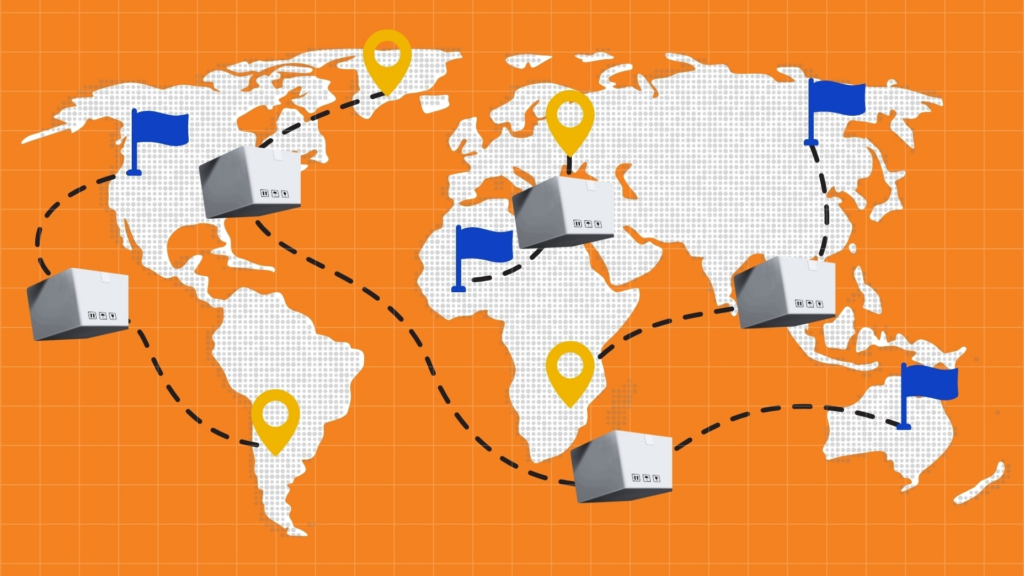Sidestep tariffs and the complexities that come with international fulfillment with Standvast.
Navigating the New Tariff Landscape
The latest tariff changes are reshaping global commerce, adding complexity to supply chain logistics and increasing costs for businesses reliant on international fulfillment. The U.S. has imposed new tariffs, including a 10% duty on Chinese goods and a 25% levy on Canadian and Mexican imports, with a temporary 30-day delay for the latter. The suspension of the de minimis rule for these countries further complicates direct-to-consumer shipping, forcing businesses to rethink their fulfillment strategies.
The Problem: Rising Costs, Disrupted Supply Chains
For years, brands like Shein and Temu have leveraged the de minimis rule to ship low-cost products directly to American consumers, bypassing import duties. Now, with that loophole closed, many e-commerce brands will face higher costs, slower transit times, and the need for new fulfillment strategies.
Although enforcement may take time as the U.S. Customs and Border Patrol works through regulation adjustments, businesses sourcing goods from China must immediately prepare for a 10% tariff that directly impacts margins (Sourcing Journal). While Canada and Mexico have a temporary reprieve, the 30-day delay does not guarantee long-term relief, and companies relying on North American supply routes should prepare now for potential cost increases.
How Standvast Helps Navigate These Challenges
The best way to manage tariffs long-term is to avoid them when possible through nearshoring and leveraging duty-free zones to mitigate costs. However, businesses can take action today to manage their existing inventory and fulfillment operations.
- Strategic Inventory Repositioning – If your products currently ship directly from China to U.S. customers or are fulfilled from Mexico, you need a new plan. Standvast’s distributed fulfillment network places inventory closer to demand centers, reducing exposure to tariffs while optimizing last-mile delivery. This strategy alone can cut last-mile delivery costs by 20-30%.
- Cost Optimization Through Multi-Node Distribution – Import costs do not have to lead to higher consumer prices. Many brands that initially fulfilled outside the U.S. to reduce costs are realizing the hidden costs of inventory errors. With looming tariffs, businesses can benefit from error-free fulfillment providers like Standvast, which offers a 99.8% bin-level accuracy rate. By distributing inventory across multiple U.S.-based fulfillment centers, companies can reduce shipping zones, optimize freight costs, and maintain profitability.
- Long-Term Supply Chain Strategy – Tariffs and trade regulations will continue evolving. Businesses that succeed will be those that rethink their fulfillment strategies now, reposition inventory intelligently, and leverage logistics partners who understand the changing global landscape.
Beyond Tariffs: The Broader Challenges of International Fulfillment
While tariffs are currently at the forefront of supply chain disruptions, they are just one aspect of the broader international fulfillment challenge. Businesses expanding internationally must also contend with various logistical, regulatory, and customer service obstacles.
1. Logistics and Transportation Issues
Cross-border shipments often involve multiple transit points, making them vulnerable to delays due to customs inspections, weather conditions, and carrier inefficiencies. Carrier reliability varies by region, complicating standardized shipping solutions.
2. High Transportation Costs
Fluctuating shipping rates, surcharges, and fuel prices can make cost management difficult. The added expenses of import duties and compliance further strain operational budgets.
3. Customs and Regulatory Hurdles
Varying trade laws, import restrictions, and documentation requirements can lead to unexpected delays and penalties. Ensuring compliance is critical to avoiding fines and confiscated goods.
4. Managing Returns and Customer Expectations
International returns are often expensive and complex. A lack of localized return centers can lead to lengthy return processes, negatively impacting customer satisfaction.
Assessing Your Current International Fulfillment Process
Before implementing new strategies, businesses must evaluate their current fulfillment operations to identify inefficiencies. Consider the following assessment methods:
- Track order accuracy rates to minimize errors in fulfillment.
- Analyze delivery speed and success rates to identify logistics bottlenecks.
- Identify recurring customs clearance issues to proactively address compliance gaps.
- Assess inventory accuracy to prevent stockouts and overstocking.
- Review fulfillment costs per order to uncover potential savings.
- Gather customer feedback to understand pain points in shipping and returns.
- Monitor fulfillment technology integration to address automation gaps and inefficiencies.
Standvast is here to help you streamline your fulfillment process.
Optimizing Fulfillment to Offset Tariff Challenges & Broader Supply Chain Complexities
To combat the rising costs, tariffs and the unpredictability of global trade, businesses must adopt a comprehensive fulfillment strategy that enhances efficiency and minimizes expenses. Here are key approaches to achieving this balance:
1. Smart Shipping Strategies
Leveraging a multi-carrier shipping strategy enables businesses to choose the most cost-effective and reliable transport methods. Along with multi-node fulfillment centers, dynamic routing powered by AI-driven logistics platforms helps optimize shipping routes, reducing both costs and delivery times
2. Compliance Automation
Navigating customs regulations and trade compliance requirements is crucial to avoiding fines and shipment delays. Automating customs documentation, tariff classification, and duty calculations helps streamline cross-border fulfillment and ensures regulatory adherence.
3. Cost-Efficient Packaging & Logistics
Optimizing packaging to reduce weight and dimensional costs can help businesses lower expenses on international shipping. Additionally, consolidating shipments whenever possible minimizes the impact of tariffs on smaller, frequent orders.
Future-Proofing Your Global Supply Chain
With the rapid evolution of global trade policies, businesses must adopt agile fulfillment strategies that can adapt to shifting regulations, economic fluctuations, and changing consumer expectations.
1. AI-Driven Logistics & Demand Forecasting
Artificial intelligence is revolutionizing logistics by analyzing shipping patterns, optimizing delivery routes, and predicting inventory demand. AI-powered insights enable businesses to make proactive decisions that minimize costs and maximize efficiency.
2. Blockchain for Supply Chain Transparency
Blockchain technology enhances supply chain security and transparency by providing immutable records of shipments, trade transactions, and customs documentation. This reduces the risk of fraud and improves compliance with global trade regulations.
3. Sustainable Fulfillment Practices
As governments push for greener supply chains, businesses that adopt eco-friendly fulfillment practices, such as carbon-neutral shipping and energy-efficient warehousing, can reduce costs while complying with sustainability regulations.
The Big Picture: Adapt, Don’t React
The global fulfillment landscape is evolving rapidly, with tariffs adding another layer of complexity to an already intricate supply chain. Companies that react to these changes without a strategy risk higher costs and operational disruptions. Instead, businesses should adapt—by reassessing fulfillment strategies, leveraging smarter distribution models, and embracing technology-driven solutions.
Standvast enables businesses to adapt with scalable, efficient, and compliant fulfillment solutions that minimize costs and optimize logistics. By taking a proactive approach, companies can turn today’s challenges into opportunities and gain a competitive edge in the international marketplace. The future of global fulfillment belongs to those who anticipate change and embrace innovation—don’t react, adapt.
Do you need help navigating this shift? Let’s talk about how we can turn today’s challenge into tomorrow’s competitive advantage.

